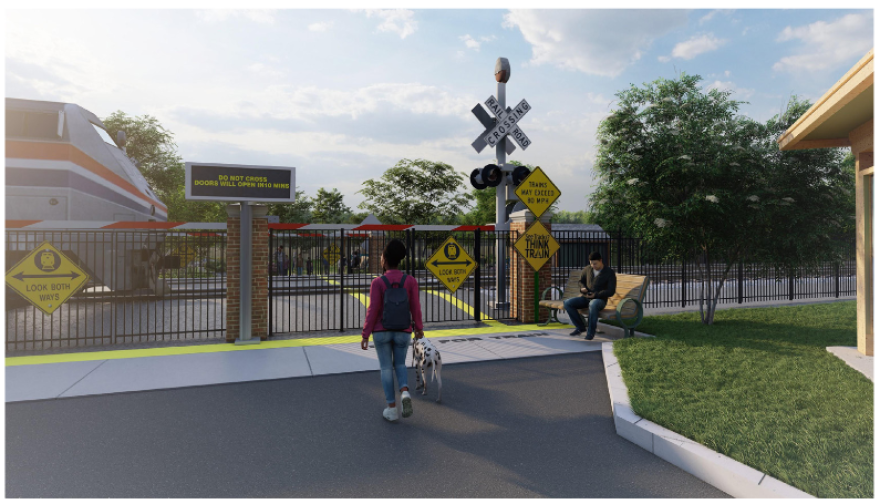Residents and officials in Castleton-on-Hudson are preparing for a hearing in the village’s fight to create a safe crossing over Amtrak rail lines and develop a new park along the Hudson River.
Mayor Joe Keegan says 30 years ago, New York state was ordered to build a bridge or tunnel for the village, but nothing was constructed as officials considered the possibility of creating high-speed rail service between Albany and New York City.
In a study last year, state and federal transportation officials determined that high-speed rail is impractical, clearing the way for Castleton-on-Hudson to request high-tech safety gates that will allow development of Riverfront Park to become a reality, according to Keegan. "New York state was allowed to close our crossing to a piece of land we own in exchange for providing pedestrian access to that piece of land. So since 1994, the crossing has been closed, but New York State never provided the pedestrian access, and we've been fighting 30 years for that access," Keegan said.
Peter Melewski, an independent transportation and planning advisor, filed a petition on the village's behalf. "Following up on that 1994 decision to say, a lot has changed in 30 years. It's time to make an upgrade crossing using modern technology. And you will see in the past, on more than one occasion has offered a bridge I'm a big advocate for bridges. I spent most of my career on bridges. I love bridges. But this is a very inappropriate location for it from a visual aspect, from an access standpoint, from a cost standpoint. We're talking about some of the material for grade crossings is already there, the asphalt is already there, the arms, the bells, the lights, they're already there. So you're talking no more than a half million dollars to get that up to speed, or a new bridge based on recent increases. With elevators for ADA, you're talking $5 to $6 million. So we feel that's not a good choice, selection of money, from the state, from a taxpayer perspective. And we feel that that grade crossing with magnetic gates and TMS and so forth is a very safe option," Melewski said.
TMS stands for “Transportation Management System.
The petition notes that the original order stated clearly that New York State Department of Transportation, in coordination with CSX and Amtrak, was obligated to build a pedestrian tunnel underneath the railroad tracks to provide public access to the river by October 1995.
The village complied with its obligation under the order by installing a locked gate it would maintain for official use only — on a temporary basis — until the tunnel was completed. But neither the tunnel nor any other pedestrian crossing was ever completed.
DOT responded to a request for comment via email, saying "Trains traveling through the Village of Castleton-on-Hudson reach speeds in excess of 100 mph and, in the interest of safety, the current at-grade rail crossing that provides access to the village’s waterfront park will remain closed to both vehicles and pedestrians until further notice."
Melewski says in light of modern grade crossing technology improvements, DOT should take a second look at pedestrian access.
"The Illinois Department of Transportation, in conjunction with Amtrak, have totally upgraded their system from St. Louis to Chicago, to accommodate 110 mile an hour trains, passenger trains, and that's fully up to speed as of this past summer," Melewski said. "And they have over 100 grade crossings that allow pedestrian access. And one of our major points is if Illinois can do it with Amtrak, why can't New York state DOT and Amtrak in New York State use the same technology to help out the village?"
Melewski adds that in addition to Illinois, state-of-the-art safety gates for pedestrian crossing are in use in California, Pennsylvania and New York City's Randall Island.
DOT says its held discussions with the village but could never reach an agreement.
Castleton-on-Hudson's proposal will be considered at a January 30th hearing before the State Department of Transportation.





